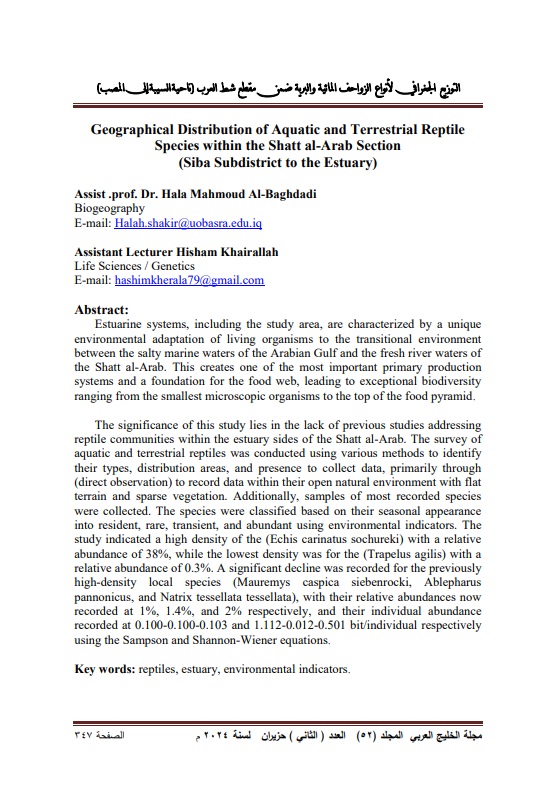Geographical Distribution of Aquatic and Terrestrial Reptile Species within the Shatt al-Arab Section (Siba Subdistrict to the Estuary)
Keywords:
reptiles, estuary, environmental indicatorsAbstract
Estuarine systems, including the study area, are characterized by a unique environmental adaptation of living organisms to the transitional environment between the salty marine waters of the Arabian Gulf and the fresh river waters of the Shatt al-Arab. This creates one of the most important primary production systems and a foundation for the food web, leading to exceptional biodiversity ranging from the smallest microscopic organisms to the top of the food pyramid.
The significance of this study lies in the lack of previous studies addressing reptile communities within the estuary sides of the Shatt al-Arab. The survey of aquatic and terrestrial reptiles was conducted using various methods to identify their types, distribution areas, and presence to collect data, primarily through (direct observation) to record data within their open natural environment with flat terrain and sparse vegetation. Additionally, samples of most recorded species were collected. The species were classified based on their seasonal appearance into resident, rare, transient, and abundant using environmental indicators. The study indicated a high density of the (Echis carinatus sochureki) with a relative abundance of 38%, while the lowest density was for the (Trapelus agilis) with a relative abundance of 0.3%. A significant decline was recorded for the previously high-density local species (Mauremys caspica siebenrocki, Ablepharus pannonicus, and Natrix tessellata tessellata), with their relative abundances now recorded at 1%, 1.4%, and 2% respectively, and their individual abundance recorded at 0.100-0.100-0.103 and 1.112-0.012-0.501 bit/individual respectively using the Sampson and Shannon-Wiener equations.




